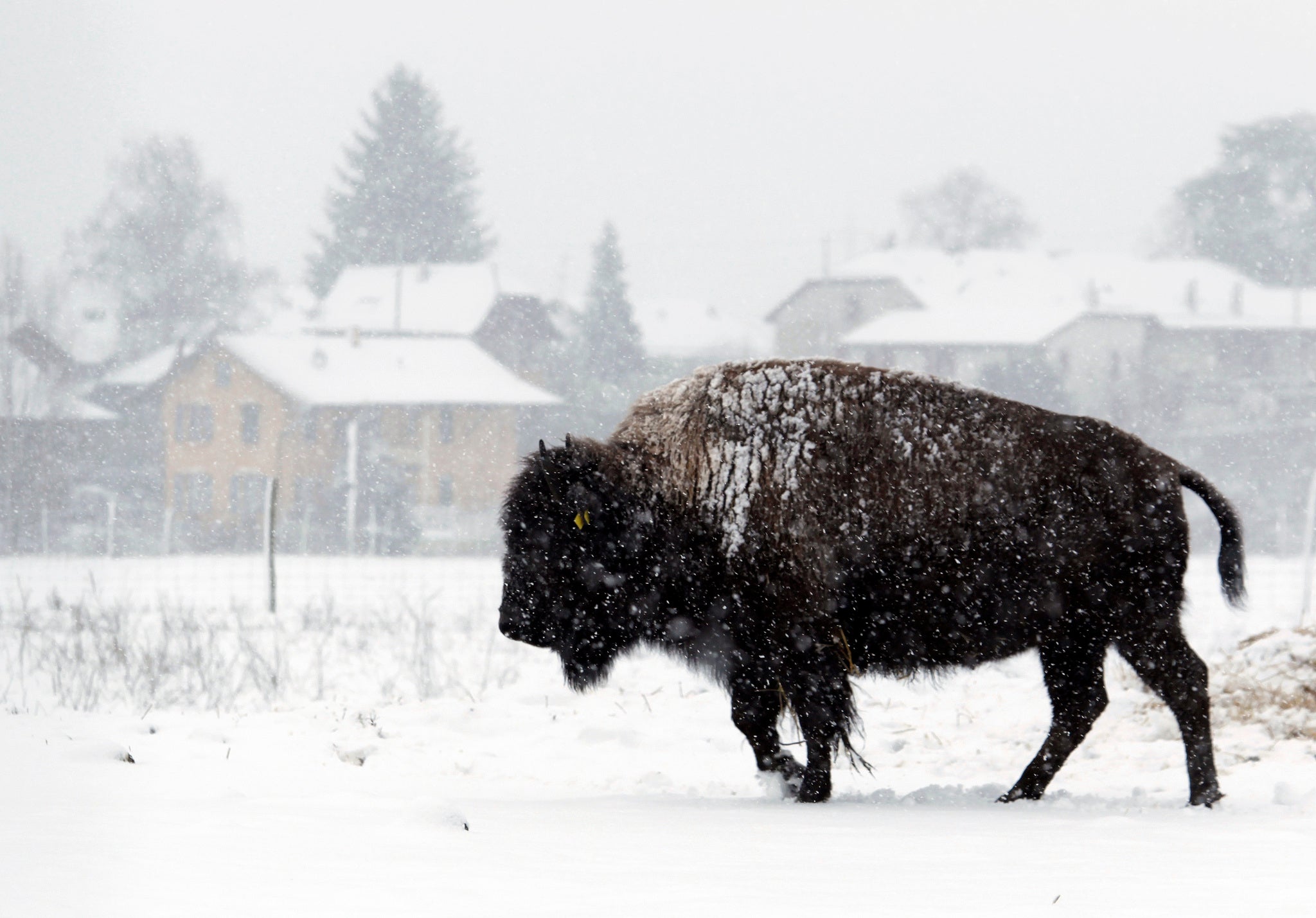The Independent's journalism is supported by our readers. When you purchase through links on our site, we may earn commission.
Yellowstone supervolcano: Videos show animals 'fleeing' but we've nothing to fear
Alarmist claims online mistook normal migration for the animals panicking

Videos of lines of bison and other animals ‘fleeing’ Yellowstone National Park in the US have raised fears that the supervolcano underneath the park is preparing to erupt, but how much truth –if any – is there to this claim?
The clip in question was uploaded to YouTube with the title “ALERT! Yellowstone Buffalo Running for Their Lives!” and quickly circulated around online blogs with one commentator, a survivalist named Tom Lupshu, offering a typical assessment that the animals had detected “something vast and deadly.”
“The Yellowstone supervolcano is the only thing there that would fit the bill,” says Lupshu.
But is the supervolcano really that scary? Well, in theory, yes. After asteroid strikes, supervolcanoes are the "second most globally cataclysmic event" that can affect the Earth, and in the past they've been responsible for mass extinctions and 'volcanic winters' lasting for year.
In pictures: Yellowstone National Park
Show all 10The Yellowstone supervolcano itself is an active hotspot, it has a massive magma chamber (scientists estimated last December that it was 2.5 times bigger than previously thought) and given what we know about its history, it erupts on a roughly 700,000 year cycle – with the last major eruption occurring some 640,000 years ago.
A cataclysmic eruption from the supervolcano some 2.1 million years ago is thought to have killed off thousands of prehistoric animals and covered nearly half of North America with ash and dust. In a nut-shell, the fear is that Yellowstone is overdue - and that the bison (below) are the first to figure it out.
However, Yellowstone Park authorities have stepped into the breach to clear up the muddle, with Public Affairs chief Al Nash calmly pointing out that the video of the bison 'fleeing' actually shows normal migration patterns.
“We do have bison, elk and other animals that have moved outside the park recently,” explains Nash in a video on YouTube, “but they’re doing that because it’s the depth of winter. Food is a little hard to find in places inside Yellowstone and they tend to migrate at this time of the winter outside of the park to lower elevations where they think there might be something to eat that’s easier to get at.”
“When the snow melts off and things start to green those very same animals will walk straight back into the park,” says Nash, who also points out that although the park has been hit by some large earthquakes in recent weeks, none of these are beyond the bounds of normal seismic activity.
For online rumour-mongers though, the fact that the bisons' 'flight' occurred at the same time as the earthquake is extra evidence that Yellowstone is about to blow. However, this just raises another question: do animals really have a sixth sense that can detect this sort of cataclysmic event?
The answer is not as clear cut as you might think. Although there's a wealth of anecdotal evidence describing animals behaving bizarrely in the hours or minutes leading up to an earthquake, there's no scientific agreement as to what forces might actually be in play.
The most widely-accepted theory is that the movement of underground rocks prior to an earthquake generates some sort of electrical signal that is only perceptible to animals, but reports of which animals are affected and in what circumstances are so varied that it's impossible to offer a single, conclusive explanation.
One case-study from Italy in 2009 suggested that toads that fled an area prior to an earthquake had done so because of changes to the chemical composition of the groundwater, while a recent project linking the movement of bats and birds with earthquakes suggests that it's the animals' ability to detect magnetic fields that gives them advanced warning.
Most of these explanations are linked to the generation of some sort of electrical signal underground, but exactly how and why this ends up tipping off the animals is still not fully understood. We may know what's causing the Yellowstone bisons to move but there's still a lot about this phenomenon we don't understand.
Subscribe to Independent Premium to bookmark this article
Want to bookmark your favourite articles and stories to read or reference later? Start your Independent Premium subscription today.

Join our commenting forum
Join thought-provoking conversations, follow other Independent readers and see their replies